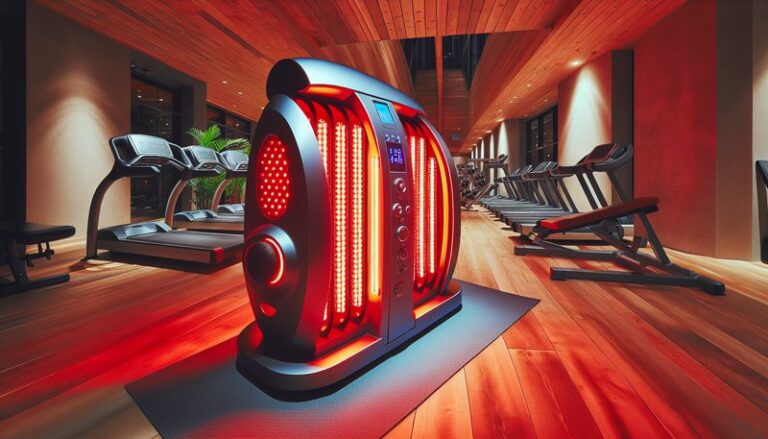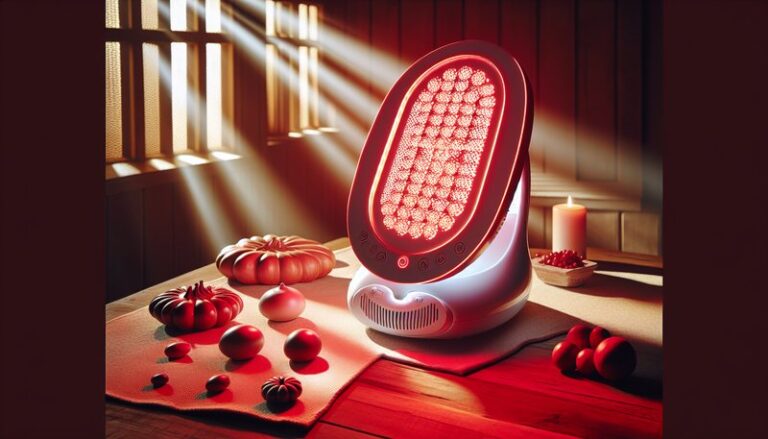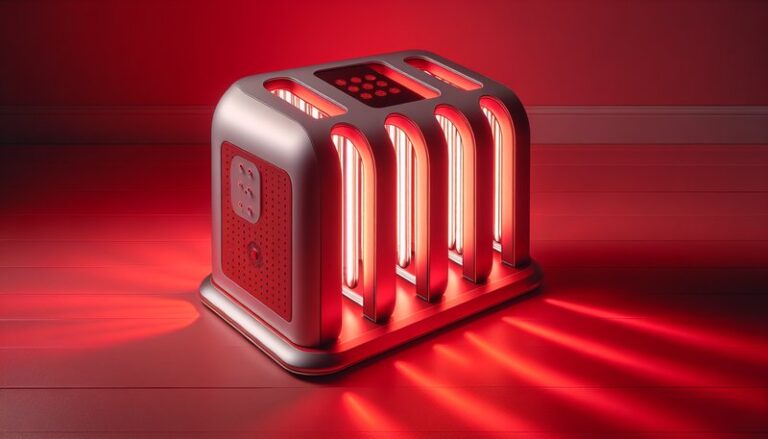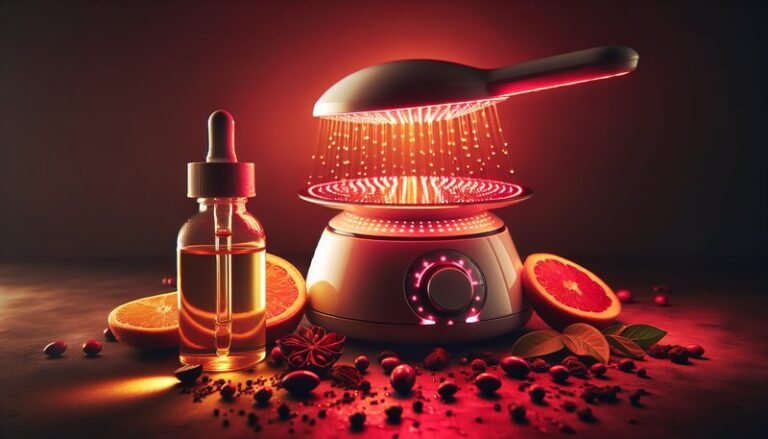Are Red Light Therapy Safe?
Is red light therapy a safe and effective option for wellness and healing?
Red light therapy (RLT) is gaining popularity as a treatment for various conditions, from skin issues to muscle recovery. This article will explore the safety of red light therapy, its benefits, and considerations to keep in mind before seeking treatment. We will also look at alternatives and answer common questions to provide a well-rounded perspective.
Key Takeaways
- Red light therapy is generally considered safe, with minimal side effects for most users.
- It offers numerous benefits, including improved skin health, reduced inflammation, and enhanced muscle recovery.
- Consulting with a healthcare professional is recommended, especially for those with pre-existing conditions or concerns.
What is Red Light Therapy?
Red light therapy involves the use of low-level wavelengths of red light to stimulate cellular function. This non-invasive treatment utilizes light energy to promote healing, reduce inflammation, and improve overall skin health. RLT works by penetrating the skin and stimulating the mitochondria, which are the energy-producing structures in our cells. When activated, these powerhouses increase ATP production (adenosine triphosphate), leading to faster recovery and rejuvenation.
Various devices, including at-home LED panels and professional-grade machines, deliver red light therapy. Treatment sessions typically last from a few minutes to about twenty, depending on the device and desired outcomes.
What are the Benefits of Red Light Therapy?
Exploring the benefits of red light therapy reveals a range of potential advantages that can enhance both physical and mental well-being.
Enhanced Skin Health
Red light therapy is widely recognized for its ability to improve skin conditions such as acne, eczema, and psoriasis. Studies indicate that RLT can promote collagen production, helping to reduce wrinkles and improve skin texture. Users often report a more youthful appearance and improved skin tone.
Reduced Inflammation and Pain Relief
RLT has anti-inflammatory properties that can help alleviate pain associated with conditions like arthritis and muscle soreness. This benefit is particularly valuable for athletes and active individuals, as it can hasten recovery times and enhance performance.
Improved Healing and Recovery
By accelerating tissue repair and reducing recovery time, red light therapy has gained traction among physical therapists and sports medicine professionals. Whether from surgery, injury, or intense exercise, RLT can help speed up the healing process, allowing individuals to return to their regular activities sooner.
Mood Enhancement
Evidence suggests that red light therapy may positively impact mood and mental health by influencing the production of serotonin, a hormone associated with happiness. Regular exposure to red light can foster a sense of well-being and relaxation.
Addiction Recovery Support
Some emerging studies propose that red light therapy can play a role in addiction recovery by helping to alleviate withdrawal symptoms and cravings, offering an additional tool for individuals seeking to overcome substance dependency.
Is it Possible to Perform Red Light Therapy at Home?
Yes, utilizing red light therapy at home is both feasible and increasingly popular. With the advancement of technology, there are several high-quality devices available for personal use.
What are the Advantages of Home Red Light Therapy?
- Convenience: Having access to red light therapy at home allows users to incorporate it into their daily routines without needing to schedule appointments.
- Cost-Effective: Investing in a home device can save money in the long run compared to ongoing therapy sessions in clinics or spas.
- Customization: Users can tailor their sessions to their needs, adjusting treatment duration and frequency to suit individual preferences.
What are the Disadvantages of Home Red Light Therapy?
- Device Variability: The effectiveness of at-home devices can vary widely in terms of power, wavelength, and quality, which may impact results.
- Lack of Professional Guidance: Without the assistance of trained professionals, users might not optimize their therapy process or adjust techniques as needed.
- Potential for Misuse: Improper use of devices may lead to ineffective treatment or skin irritation if not used according to guidelines.
What are the Things to Consider Before Trying Red Light Therapy?
Before starting red light therapy, it’s essential to consider various factors to ensure safety and effectiveness.
Skin Sensitivity
Individuals with sensitive skin or certain skin conditions should consult a healthcare provider before beginning red light therapy, as they may have heightened reactions to light exposure.
Pre-existing Medical Conditions
Consulting a doctor is crucial for those with specific health issues, such as photosensitivity or a history of skin cancer, as red light may not be suitable for everyone.
Proper Usage and Device Selection
It’s vital to choose a reputable device and follow guidelines for use strictly. Understanding the specific wavelengths and intensities that are most effective for desired outcomes can ensure optimal results and enhanced safety.
Get the lowdown on Do they work?
Get the full picture in Red Light Therapy at Planet Fitness?
Consultation with Healthcare Professionals
Engaging with a healthcare provider can help prevent potential risks and tailor the therapy to one’s individual health needs. They can provide tailored advice based on current medications, personal health history, and overall fitness goals.
What are the Alternatives to Red Light Therapy?
If red light therapy does not seem suitable, several alternative treatments offer similar benefits.
Cold Laser Therapy
Also known as low-level laser therapy, this treatment employs lasers rather than light panels. It can effectively treat pain and inflammation while promoting healing, similar to RLT.
Ultrasound Therapy
Primarily used in physical therapy settings, ultrasound therapy uses sound waves to penetrate tissues, providing pain relief and encouraging tissue repair without surgery.
Photobiomodulation Therapy
This broader category may include red light therapy and other light-based treatments. It’s designed to stimulate cellular activity and can be tailored with various wavelengths to target specific conditions.
Massage and Physical Therapy
For those experiencing muscle soreness or injury, traditional massage therapy and physical therapy can offer pain relief and support recovery through manual techniques and exercises.
Conclusion: Is it Recommended to Try Red Light Therapy?
Red light therapy appears to be a safe and effective option for various conditions, offering numerous physical and mental health benefits. While it is generally considered safe for most individuals, consulting a healthcare professional is advised to ensure it aligns with personal health goals and concerns. Ultimately, RLT could be a valuable addition to your wellness routine, but the decision should be made with full understanding and situational awareness.
Frequently Asked Questions
Is red light therapy safe for everyone?
While red light therapy is generally safe, individuals with specific skin conditions or health issues should consult a healthcare professional before starting treatment.
How long does a red light therapy session usually last?
Sessions typically last between 5 to 20 minutes, depending on the device and the area of treatment.
Can I perform red light therapy every day?
Many users can safely perform red light therapy daily, but it is essential to follow device instructions, consult with a healthcare provider, and listen to their body’s responses for best results.
Are there side effects associated with red light therapy?
Most individuals experience little to no side effects, but some may notice temporary redness or irritation at the application site. It is important to follow guidelines and watch for any adverse reactions.
Is there scientific evidence supporting red light therapy?
Yes, numerous studies have explored the effects of red light therapy on skin health, pain relief, and healing processes, demonstrating positive outcomes across various applications.






